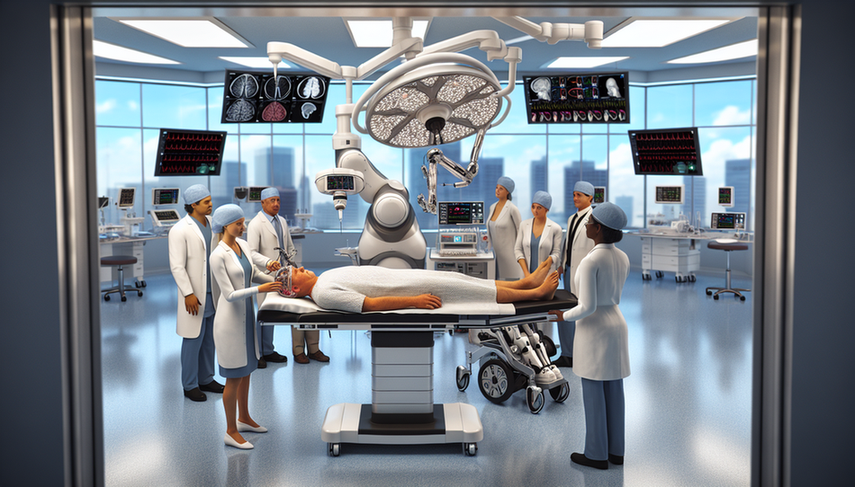Robotic Neurosurgery and Exoskeletons: A New Frontier in Brain Surgeries and Guided Rehabilitation

Robotic neurosurgery and the use of exoskeletons represent a significant advancement in the field of brain surgeries and guided rehabilitation. These technologies not only promise to enhance the precision and safety of surgical procedures but also offer new opportunities for the recovery of patients with neurological injuries. In this article, we will explore how these innovations are transforming the current medical landscape.
Advances in Robotic Neurosurgery
Robotic neurosurgery has revolutionized the way we approach brain surgeries. Robotic surgical systems enable surgeons to perform procedures with millimeter precision, reducing the risk of complications and improving postoperative outcomes. These systems utilize advanced interfaces that facilitate real-time control and visualization, which is crucial in delicate interventions.
On the other hand, exoskeletons are emerging as valuable tools in the rehabilitation of neurological patients. A recent study has demonstrated that the use of exoskeletons in acute neurosurgery patients is safe and feasible, although it requires staff adaptation to organize the sessions. Patients who participated in the study expressed high satisfaction and a desire to continue treatment, underscoring the potential of this technology in neurological recovery.
Guided Rehabilitation with Exoskeletons
Guided rehabilitation with exoskeletons offers new hope for patients with spinal cord injuries. Technologies such as the brain-machine interface and limb reanimation allow for the creation of a bypass system around the injury site, thereby improving motor function. These systems analyze brain signals to control devices that assist patients, such as robotic arms or exoskeletons, facilitating a more effective recovery.
The practical implementation of these systems still faces challenges, but recent advances in neural interface technology and functional electrical stimulation are laying the groundwork for improved functional outcomes following traumatic spinal cord injuries.
Conclusions
The integration of robotic neurosurgery and exoskeletons into clinical practice represents a new horizon in the treatment of complex neurological conditions. These technologies not only enhance the precision and safety of brain surgeries but also offer new pathways for the guided rehabilitation of patients with motor disabilities. As we continue to explore and develop these innovations, it is essential for medical professionals to stay informed and prepared to adopt these tools in their daily practice.
Referencias
- [1] Safety and practicality study of using an exoskeleton in acute neurosurgery patients
- [2] Brain machine interface and limb reanimation technologies: restoring function after spinal cord injury through development of a bypass system
Created 24/1/2025
